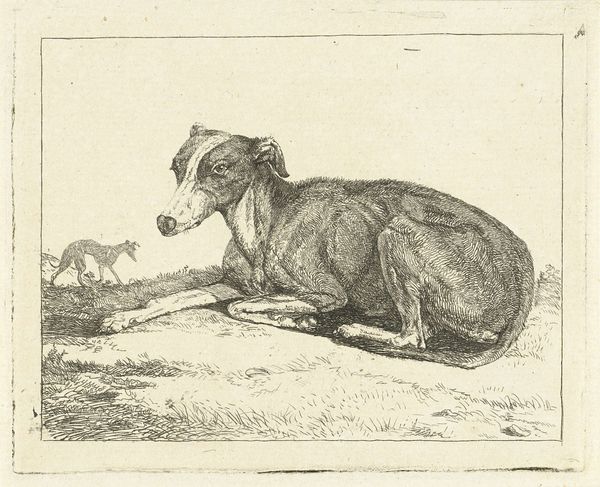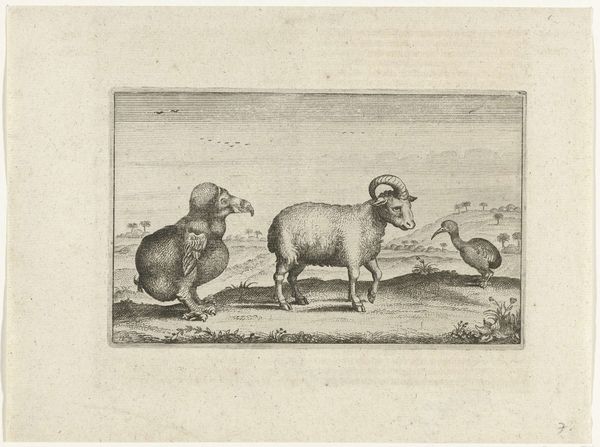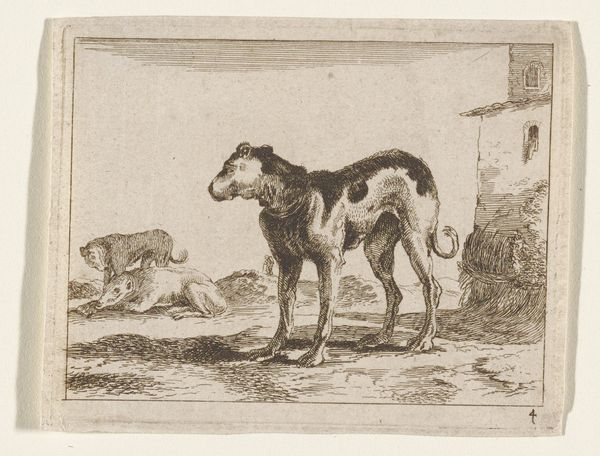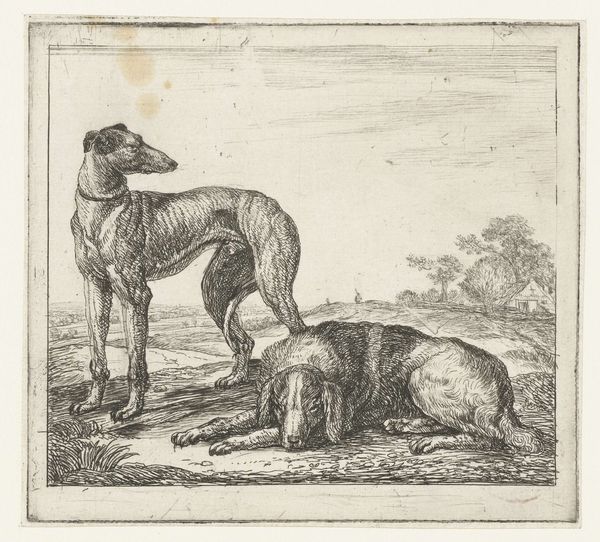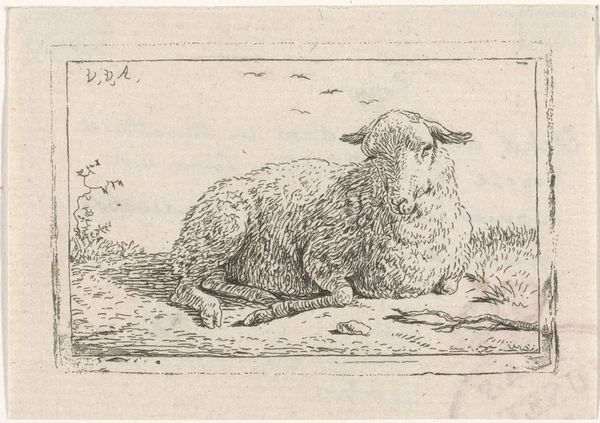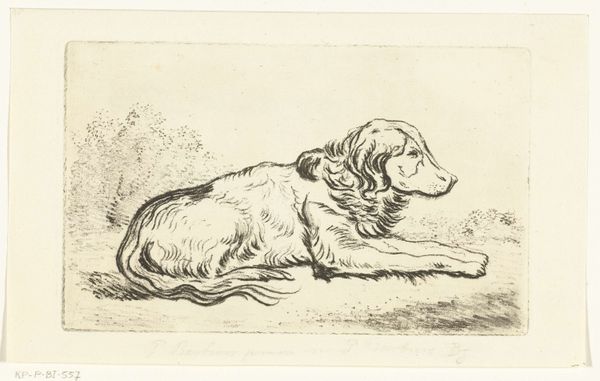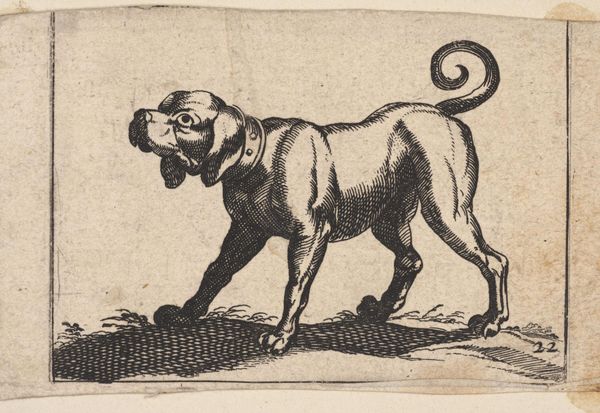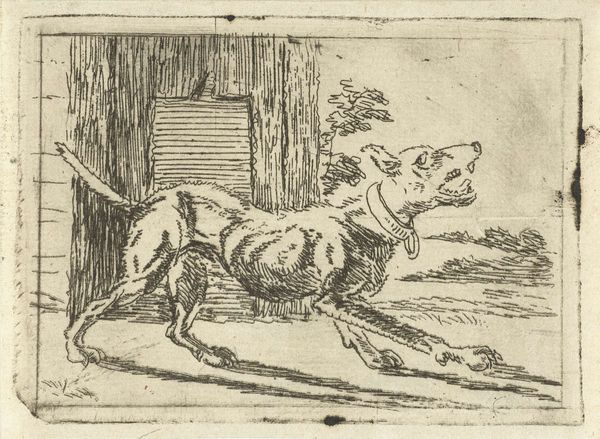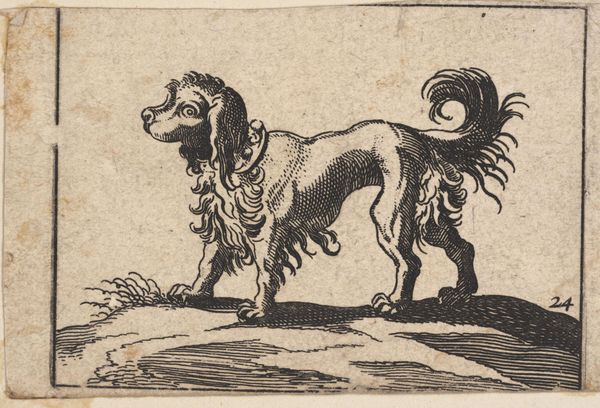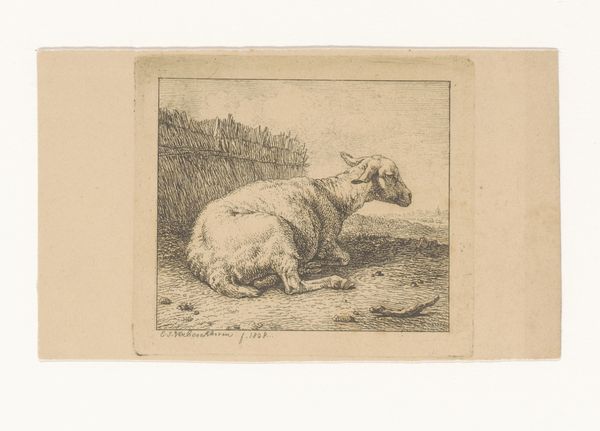
print, engraving
#
animal
#
dutch-golden-age
# print
#
old engraving style
#
landscape
#
engraving
Dimensions: height 105 mm, width 170 mm
Copyright: Rijks Museum: Open Domain
Curator: Adriaen Matham gives us quite a perplexing scene with this engraving, dating from 1632-1646 and held in the Rijksmuseum's collection. The piece is entitled, "Hippopotamuses near Loango." Editor: My initial reaction is a sense of unease. The scene feels surreal and strangely barren, punctuated by the bizarre pairing of hippos and a beached squid. Curator: Indeed. Loango, now part of Congo, was a trading post for the Dutch West India Company. This image taps into the early European fascination with, and often misrepresentation of, the 'exotic' new world, blurring the line between observation and projection. What does this supposed African coastline and seascape tell us? The Dutch audience would view an interplay of known maritime power contrasted against new geographical and animal sightings. Editor: The stark composition reinforces that. The tight framing accentuates the flatness of the landscape, almost mimicking the limited tonal range afforded by the engraving technique. This enforces a kind of… graphic simplicity? The repetition of the hippos heads in the water further flattens the image and makes the perspective quite strange. Curator: Absolutely. The Hippopotamus held multiple cultural associations. Early travelers' accounts may be confused between, and symbolized as, the Behemoth, but also simply of powerful 'new world' symbols that contrast the "old world". Furthermore, the beached squid becomes, then, an emblem of captured resources from abroad—exotic objects on display as curiosities, presented in the visual field. Editor: The graphic quality certainly underscores this “objectification” that seems endemic in colonial encounters. Each mark carefully etched contributes to an overall image that flattens the subjects within this field of encounter. The very contrast is part of the composition. Curator: Matham provides an intriguing lens through which to explore early colonial viewpoints—as always. Editor: It provides a formal economy that highlights both geographical space and a unique time in the European mindset, doesn't it?
Comments
No comments
Be the first to comment and join the conversation on the ultimate creative platform.
